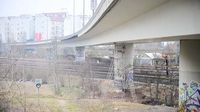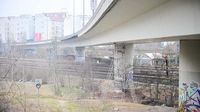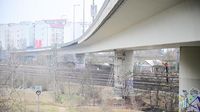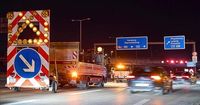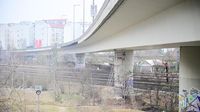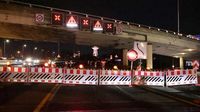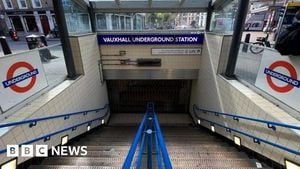Berlin’s A100 Ringbahn bridge has faced a complete closure due to structural damage, significantly impacting traffic in the city. On the evening of March 19, 2025, at 8:00 PM, the bridge was declared unsafe for vehicular traffic after inspectors uncovered severe cracks. This marks a grim milestone in the ongoing battle to maintain Berlin's infrastructure, as authorities warn that disruptions could last for at least two years.
The Autobahn GmbH, responsible for highway management, confirmed the closure after thorough examinations indicated that not only was it unsafe, but any attempts at temporary reparations would be futile. The company’s Nord-Ost regional manager, Ronald Normann, stated, "The full closure is unavoidable for safety reasons." This decisive action highlights the critical state of public infrastructure in Berlin, where an estimated 230,000 vehicles use the A100 daily.
In addressing the public's concerns, Traffic Senator Ute Bonde emphasized that there were limited alternatives to circumvent the chaos. "Given the location and conditions, direct detours are minimal. We recommend extensive diversions, including switching to S and regional trains if possible," she said, acknowledging the inevitable traffic jams that will occur.
The adjacent Westend Bridge, also part of the A100, will be temporarily shut down as a precaution following initial stability concerns revealed during inspections. Traffic management plans are being formulated rapidly to manage the expected chaos in surrounding areas, particularly at the Funkturm interchange.
Authorities had been monitoring the bridge closely since early March when a previously identified crack in a load-bearing section visibly worsened, forcing the bridge to operate on a single lane until the complete closure. This prominent bridge has stood since 1963 and was deemed critical for the city's transportation framework.
The Berlin Transport Department is currently liaising with various stakeholders, including the police and local emergency services, to develop viable traffic solutions in response to the expected congestion. Despite the ongoing urgency, there is acknowledgment that the construction of a new bridge will be a lengthy process, impacting the daily commute drastically.
As stressed by Ralph Brodel, spokesperson for the Autobahn GmbH, officials anticipate that the bridge will be out of service for "at least two years." In light of these developments, commuters are urged to prepare for extended wait times and seek alternative routes.
As of this writing, the S-Bahn trains, which run beneath the Ringbahn bridge, are projected to continue operations without disruption while alternative arrangements are established. However, the longer-term implications of the bridge closure will not only challenge everyday travel but potentially disrupt local economies reliant on efficient transport.
This infrastructure debacle comes at a time when public confidence in Berlin's transport systems is already teetering, driven by a growing perception of neglect. District Councillor Oliver Schruoffeneger remarked, “This is a disaster we saw coming.” He highlighted the challenges of demolishing a bridge while maintaining operations beneath it and deemed the situation a complex issue requiring immediate attention.
As the city braces for traffic disturbances, officials are rallying efforts to streamline the planning of detours and protective measures across the affected areas. In a bid to foster smoother alternative transport options, the coordination includes the participation of various transport authorities.
In summary, as the situation develops, stakeholders and residents alike are left grappling with the fallout from this critical infrastructure issue, casting light on the pressing need for proactive investment in transport systems to prevent future crises.
The aftermath of this closure will not only test the resilience of the city’s transport infrastructure but also the patience of its residents, suggesting this situation will be a substantial topic of conversation for years to come.

